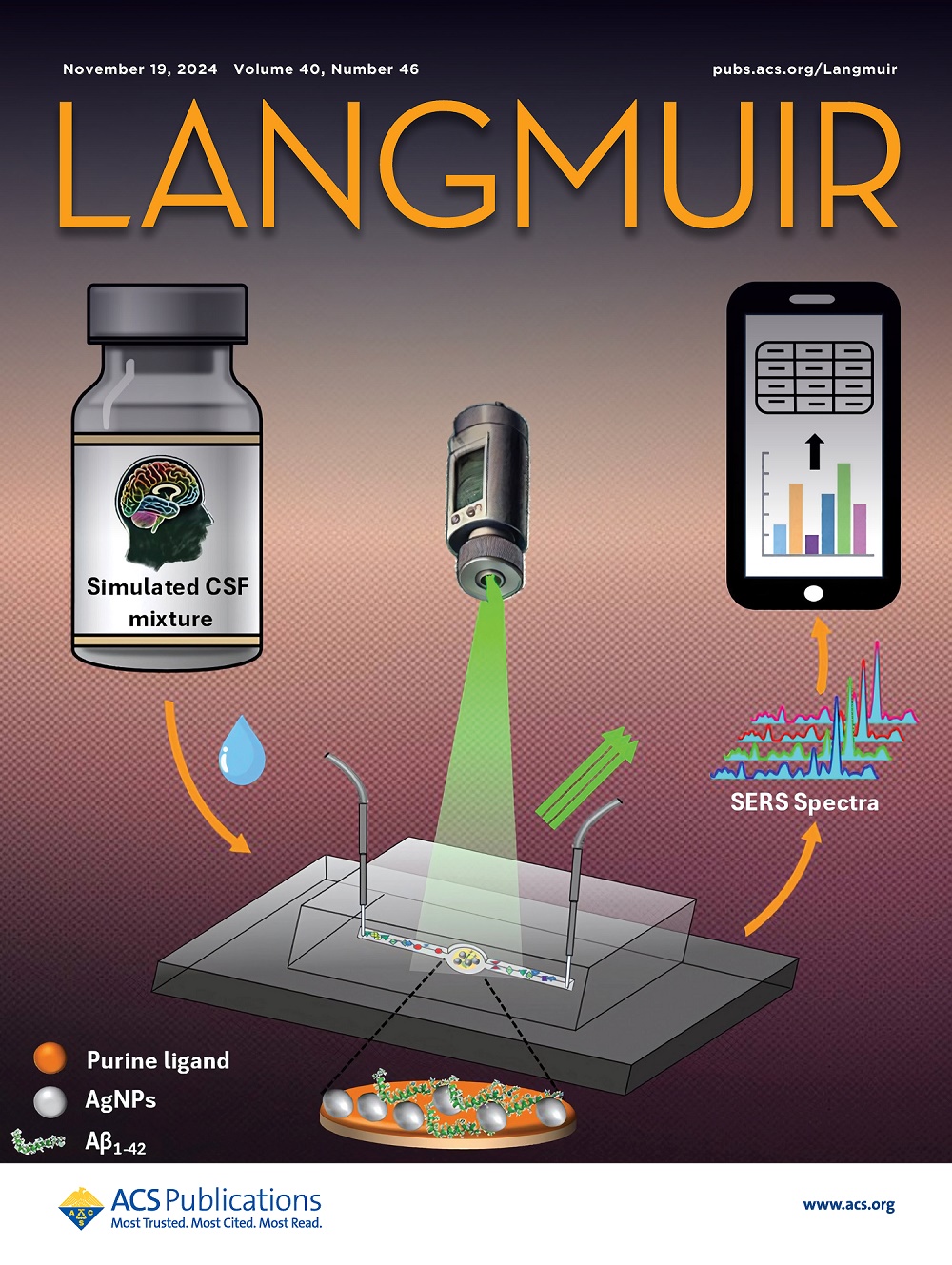十六烷基三甲基铵离子(CTA+)与乙醇共存条件下金枝晶结构的生长。
IF 3.9
2区 化学
Q2 CHEMISTRY, MULTIDISCIPLINARY
引用次数: 0
摘要
在含有十六烷基三甲基溴化铵(CTAB)的乙醇和水的混合溶剂中,用抗坏血酸还原金离子,研究了金纳米/微结构的生长。乙醇与水的比例、CTAB和NaBr的浓度对金结构的几何形状有影响。我们观察到尺寸超过10 μm的金枝晶,它们由许多不同尺寸的针组成,有些小到几十纳米。金树突在20分钟内生长,比以前的报道要短。金枝晶的总体尺寸与Br-的浓度有关,允许小于10 μm的尺寸。CTA+胶束对金枝晶的生长至关重要。乙醇的比例改变了溶液的粘度和表面张力,导致了各种各样的几何形状。我们测量了金树突的消光光谱,发现它们表现出宽带光学响应。用暗场光学显微镜观察表明,它们的等离子体共振主要在红色区域。对对氨基噻吩(p-ATP)在785 nm下的拉曼光谱进行了测量,结果表明,对氨基噻吩(p-ATP)表面存在场增强现象。本文章由计算机程序翻译,如有差异,请以英文原文为准。
Growth of Gold Dendritic Structures under the Coexistence of Hexadecyltrimethylammonium Ions (CTA+) and Ethanol.
We investigated the growth of gold nano/micro-structures by reducing gold ions with ascorbic acid in a mixed solvent of ethanol and water containing hexadecyltrimethylammonium bromide (CTAB). The geometries of the gold structures were influenced by the ratio of ethanol to water and the concentrations of CTAB and NaBr. We observed gold dendrites exceeding 10 μm in size, which were composed of numerous needles of varying sizes, some as small as a few tens of nanometers. The gold dendrites were grown within 20 min, a shorter duration compared to previous reports. The overall size of the gold dendrites exhibited dependence on the concentration of Br-, allowing for smaller sizes of less than 10 μm. The micelles of CTA+ were essential for the growth of gold dendrites. The ethanol ratio altered the viscosity and surface tension of the solution, resulting in a variety of geometries. We measured the extinction spectra of the gold dendrites, which revealed that they exhibited a broadband optical response. Observations using a dark-field optical microscope showed that their plasmon resonances were predominantly in the red region. The Raman spectrum of para-aminothiophenol (p-ATP) was measured using the gold dendrites under 785 nm, which revealed field enhancement at the surface of the gold dendrites.
求助全文
通过发布文献求助,成功后即可免费获取论文全文。
去求助
来源期刊

Langmuir
化学-材料科学:综合
CiteScore
6.50
自引率
10.30%
发文量
1464
审稿时长
2.1 months
期刊介绍:
Langmuir is an interdisciplinary journal publishing articles in the following subject categories:
Colloids: surfactants and self-assembly, dispersions, emulsions, foams
Interfaces: adsorption, reactions, films, forces
Biological Interfaces: biocolloids, biomolecular and biomimetic materials
Materials: nano- and mesostructured materials, polymers, gels, liquid crystals
Electrochemistry: interfacial charge transfer, charge transport, electrocatalysis, electrokinetic phenomena, bioelectrochemistry
Devices and Applications: sensors, fluidics, patterning, catalysis, photonic crystals
However, when high-impact, original work is submitted that does not fit within the above categories, decisions to accept or decline such papers will be based on one criteria: What Would Irving Do?
Langmuir ranks #2 in citations out of 136 journals in the category of Physical Chemistry with 113,157 total citations. The journal received an Impact Factor of 4.384*.
This journal is also indexed in the categories of Materials Science (ranked #1) and Multidisciplinary Chemistry (ranked #5).
 求助内容:
求助内容: 应助结果提醒方式:
应助结果提醒方式:


